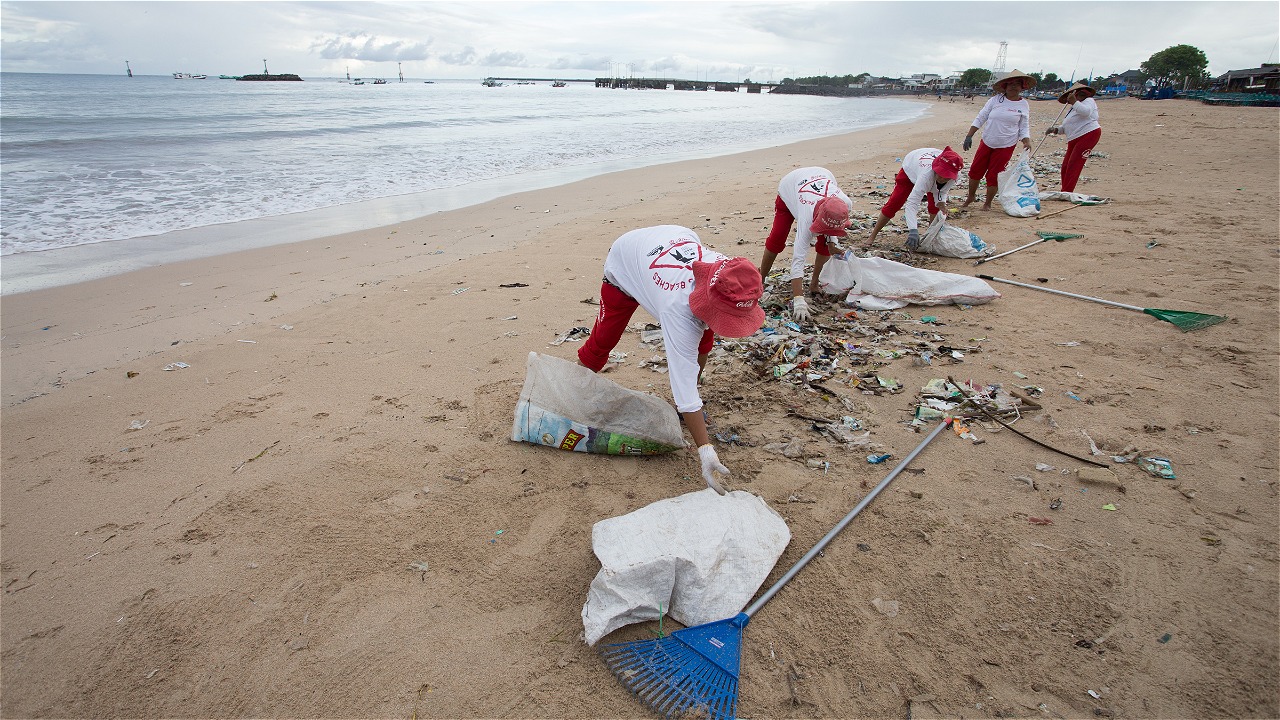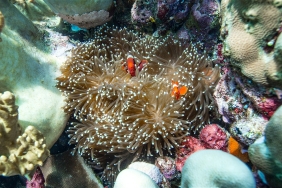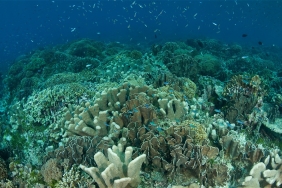4 SMART WAYS OF MARINE TOURISM ON A TRIP WITH MARINE BUDDIES DENPASAR TO WEST BALI TN
By:
- Abrit Sweta Pamungkas, Andri Sastra, Shalna Narulita, Adelia Karamina (Intern, Responsible Marine Tourism, WWF-Indonesia)
- Faradila Intan, Bima Fatah, Hans Arthur (Intern, Bycatch & Sharks Conservation, WWF-Indonesia)
The weekend (7-8/07/2018) was different from usual. We, interns at WWF-Indonesia's office in Denpasar, Bali, joined the Marine Buddies Denpasar community. This WWF-Indonesia-assisted marine awareness community also collaborated with Marine Debris Guard Udayana in a Funtastrip to Menjangan Island, West Bali National Park (TN).
This Funtastrip is a continuation of the talkshow "Visiting Smartly" organized by Marine Buddies Denpasar earlier (13/05/2018) with West Bali National Park, Nusa Penida Regional Marine Conservation Area (KKPD), and WWF-Indonesia at Taman Baca Kesiman, Denpasar, Bali. In the Funtastrip, we were invited to practice how to visit a conservation area smartly.
West Bali National Park is located in Gilimanuk Village, Melaya District, Jembrana, Bali. That afternoon, a 30-minute boat ride from Labuan Lalang, we set foot on the white sand of Menjangan Island. Our eyes were spoiled by the clear sky, reflecting light onto the sea with its gradation of colors. On Menjangan Island, there were only us and a few foreign tourists who had just left the beach after swimming and snorkeling. Menjangan Island is indeed famous as a beautiful marine tourism destination, with tight coral reefs and a variety of fish.
We spent the weekend learning about waste collection methods, planting mangroves, getting to know the Marine Buddies app, and cleaning up coastal debris. From the trip, here are 3 things that we can practice when traveling to marine conservation areas, that we learned.
Cleaning Trash
The bright white to dark blue ocean that adorns the seas of West Bali National Park is a beautiful side given to us while the trash that also adorns it is a hard slap to anyone who sees it.
"A lot of trash is carried by the current to the beaches around the national park. There are still few people who contribute to cleaning up trash on Menjangan Island, which is one of the difficulties we face," said Mr. Wayan Katun, a forest ranger from the West Bali National Park (BTNBB) who helped us clean up Menjangan Island's coastal trash.
"In the last 5 years, there has only been a movement of people helping to clean up the garbage, but the number is still relatively small with the amount of garbage that continues to grow," he continued.
From the results of cleaning up the Menjangan Island coastal garbage, 19 sacks of garbage weighing 192 kilograms were collected.
Trash scattered in the middle of the sea causes problems in a domino effect. For example, sea turtles accidentally eat plastic waste that is mistaken for jellyfish, small plastics that are mistaken for small fish and consumed by marine predators. So that the consumption of marine life is not healthy. It also has an impact on humans who consume marine life, which contains plastic.
The waste problem is a challenge for various parties to immediately find solutions to reduce this threat. Therefore, it is important to commit and take action to reduce and manage waste to the maximum, starting from the source of waste itself - one of which is us.
Arranging Waste
Just collecting trash? Don't! In Funtastrip, Udayana's Marine Debris Guard (MDG) Community shared how a waste data collection method that makes it easier for people to record waste on the coast.
"In the method from The Commonwealth Scientific and Industrial Research Organisation (CSIRO), an Australian research institute, we map the distribution of coastal waste with random sampling. At each observation point, we record the amount and type of waste found every 100 meters," explained DeIndra Pratama, chairman of MDG. "For example, whether food or beverage packaging, the text listed, and the amount," he continued.
The waste we collected consisted of various kinds of waste, but it was dominated by plastic waste, and this was heartbreaking.
Planting Mangroves,Helps Prevent Abrasion
Mangrove is a very useful plant to prevent abrasion. In Pejarakan, Gerokgak, Buleleng, we planted mangroves. There, there is an abrasion of about 7 meters per year that erodes the beach. This aroused a sense of concern from the community around the beach so that people flocked to cultivate mangroves.
Recognizing and Assessing Conservation Areas with the Marine Buddies App
"You are in a Marine Protected Area," is the notification from the Marine Buddies app that will pop up on your smartphone when you enter one of Indonesia's 165 marine protected areas. Through this application released by WWF-Indonesia, tourists can recognize and monitor a conservation area by reporting what they observe and rating the area.
For us, overall, Menjangan Island has been managed quite well by the West Bali National Park Center, seeing the number of conservation area signboards, the efforts to deal with waste, and the relatively good condition of the coral reef.
If you want to travel to a marine conservation area, don't forget to rate it and follow the tips for environmentally friendly marine tourism in the Marine Buddies application. We also need to protect conservation areas, so that we can still enjoy their natural beauty in the future.





